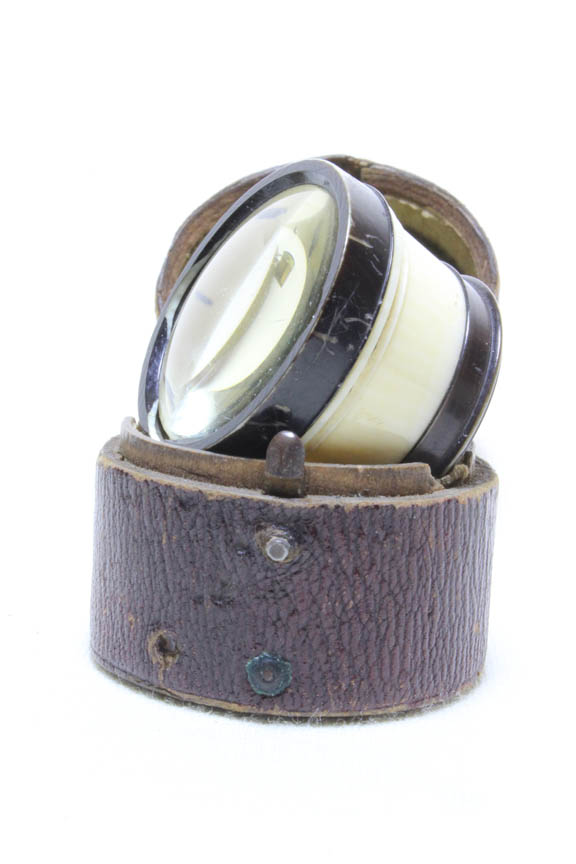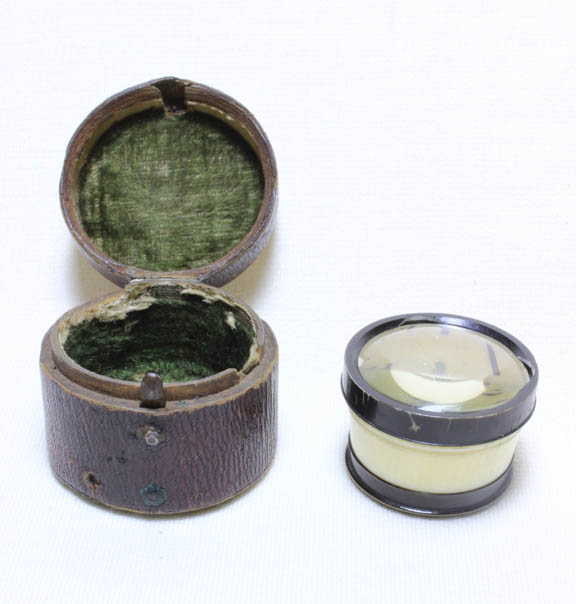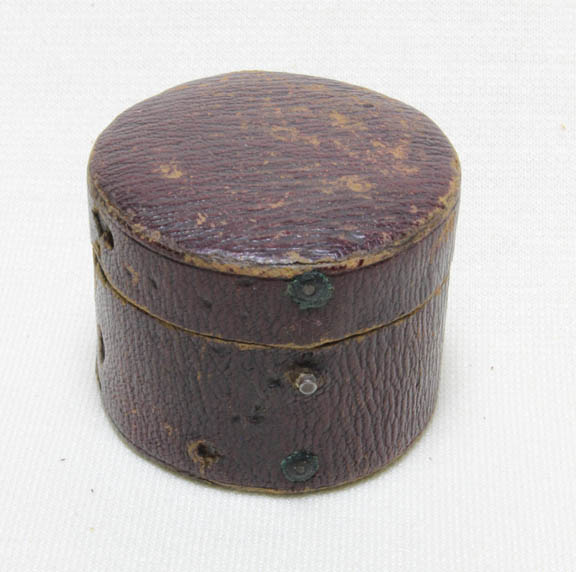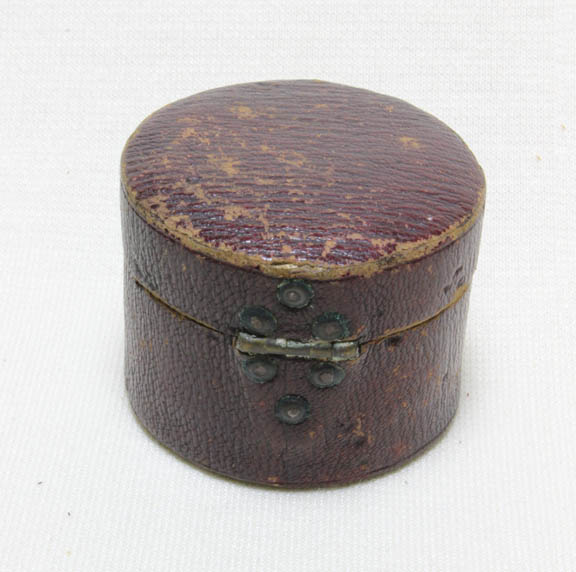EARLY IVORY LOUPE
c. LATE 18TH TO EARLY 19TH CENTURY
Please Click On Any Picture for a Larger Version
 DESCRIPTION: This is a fine ivory 'loupe' in original case lined in thin dark green velvet and covered with thin purple-red leather. It has a brass hinge and brass push button catch. The case measures 30 mm in diameter and has a height closed of 30 mm. The two ends are of blackened ivory, the middle portion natural color. The narrower end of the instrument has a diameter of 26.5 mm and the wider end, about 29 mm. The lens on the wider end is planoconvex. It appears the inside of this magnifier was black at one time but most of that has worn away.
DESCRIPTION: This is a fine ivory 'loupe' in original case lined in thin dark green velvet and covered with thin purple-red leather. It has a brass hinge and brass push button catch. The case measures 30 mm in diameter and has a height closed of 30 mm. The two ends are of blackened ivory, the middle portion natural color. The narrower end of the instrument has a diameter of 26.5 mm and the wider end, about 29 mm. The lens on the wider end is planoconvex. It appears the inside of this magnifier was black at one time but most of that has worn away.
HISTORY OF THE LOUPE
Ironicly, the word Loupe dates to the early 20th century. It derives from a French term meaning an imperfect gem. But loupes have been around for hundreds of years, the term simply referring to a small magnifier of relatively low power and usually either hand held or mounted in a device to hold it near the eye. Improvements in the optical resolution of these instruments went through several phases. In 1812 Wollaston first suggested a loupe composed of two planoconvex lenses with the plano sides facing each other and a diaphragm in between which improved spherical aberration at the expense of field size and brightness. In 1829, Coddington invented an inexpensive method still in use today which is to grind a V-shaped groove into the center of a lens and then paint this black to block light from the periphery again limiting spherical aberration. Other variants on the idea of a diaphragm were produced but none has persisted as long as the Coddington. In 1864 an achromatic aplanatic triplet was produced by the German physicist Steinheil, still in use today. A variation of the Steinheil was invented in 1879 by Charles Hastings, also still in use today. These two magnifiers generally both produce good images at 10X or lower but as the magnification rises, each has its own advantages and disadvantages, with the resolution in the center of the field actually being better with the older Steinheil design.



 DESCRIPTION: This is a fine ivory 'loupe' in original case lined in thin dark green velvet and covered with thin purple-red leather. It has a brass hinge and brass push button catch. The case measures 30 mm in diameter and has a height closed of 30 mm. The two ends are of blackened ivory, the middle portion natural color. The narrower end of the instrument has a diameter of 26.5 mm and the wider end, about 29 mm. The lens on the wider end is planoconvex. It appears the inside of this magnifier was black at one time but most of that has worn away.
DESCRIPTION: This is a fine ivory 'loupe' in original case lined in thin dark green velvet and covered with thin purple-red leather. It has a brass hinge and brass push button catch. The case measures 30 mm in diameter and has a height closed of 30 mm. The two ends are of blackened ivory, the middle portion natural color. The narrower end of the instrument has a diameter of 26.5 mm and the wider end, about 29 mm. The lens on the wider end is planoconvex. It appears the inside of this magnifier was black at one time but most of that has worn away.